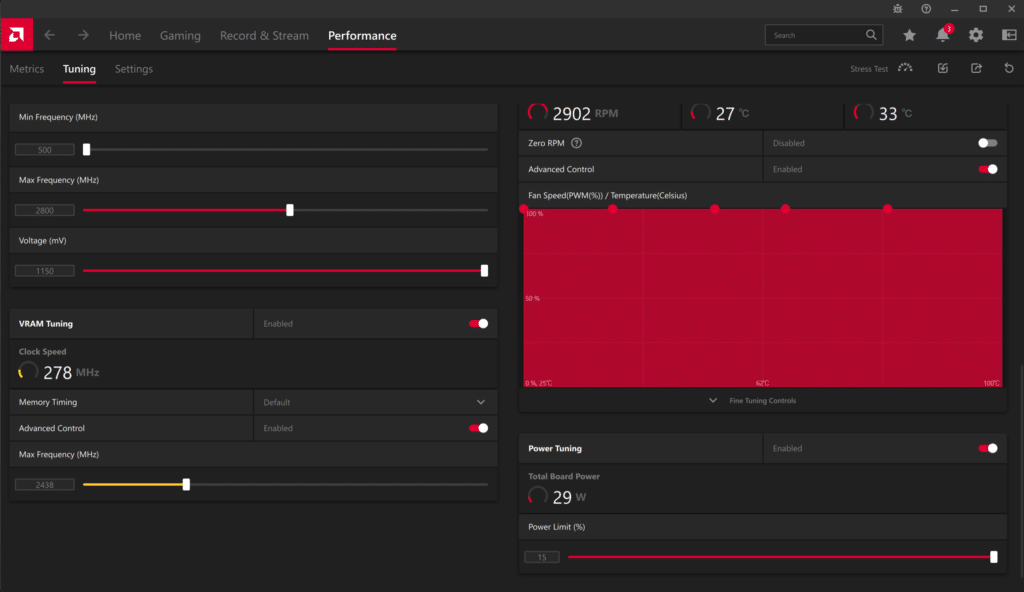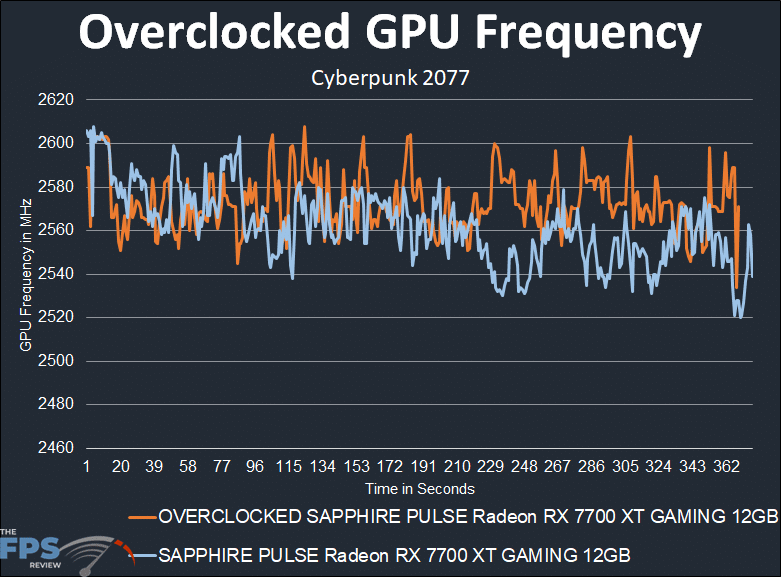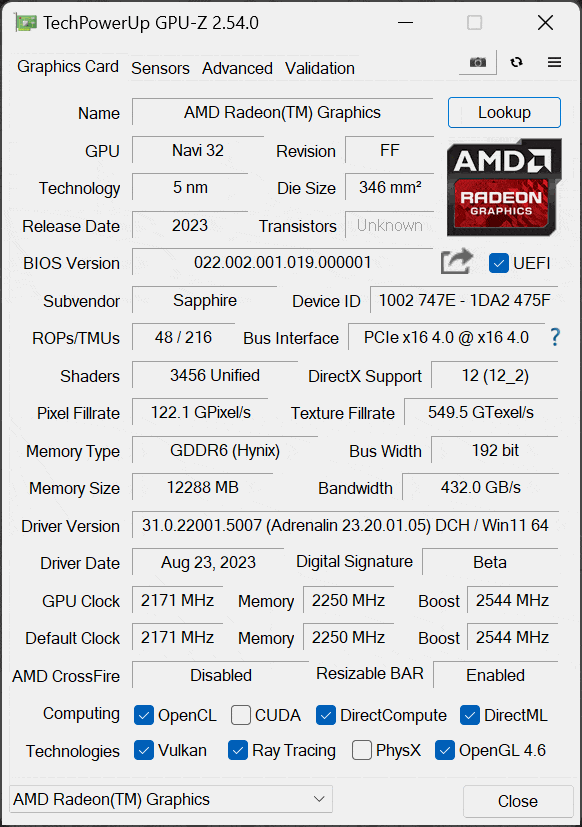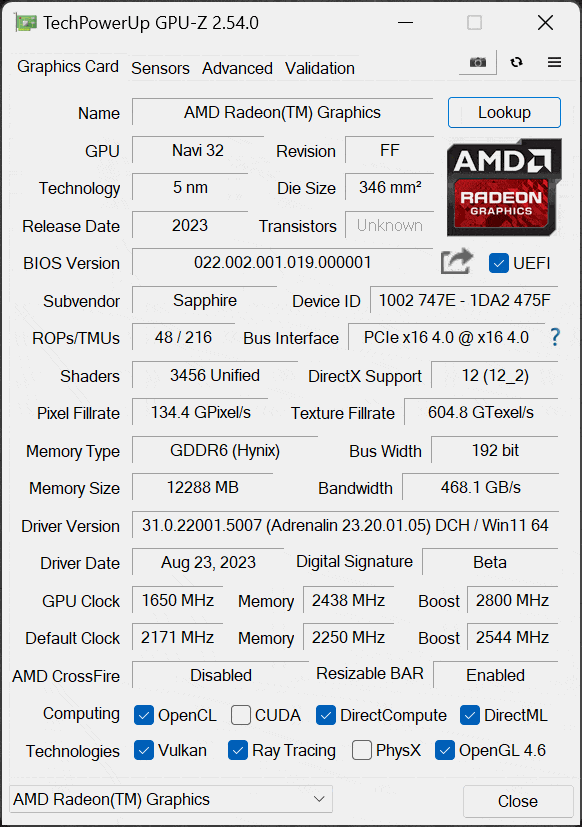Overclocking SAPPHIRE PULSE Radeon RX 7700 XT GAMING
To overclock the SAPPHIRE PULSE AMD Radeon RX 7700 XT GAMING 12GB video card we are going to use the built-in overclocking performance tuning in AMD Radeon software drivers.


When we open up the Performance Tuning and hit Custom, we find that we can control GPU, memory, fan, and Power Tuning on the SAPPHIRE PULSE Radeon RX 7700 XT GAMING 12GB video card. We cannot, however, raise the Voltage. We can set a maximum Power Tuning slider to a maximum of 15% over the default on the SAPPHIRE PULSE Radeon RX 7700 XT GAMING. We can also enable 100% fan speeds to ensure the highest overclock.
Due to the way AMD GPU frequency scaling works, which is very dynamic, we can simply raise the Max Frequency slider in increments until we find the highest overclock, or maximum allowable clock speed. The default value was set at 2450MHz and we moved the slider up in 200MHz increments, all the way up to 3300MHz even to see what would happen. We settled on a saner, and less potential for bottlenecking value of 2800MHz which seemed to provide some clock speed improvement, though minor.
We settled on 2800MHz as our “highest” overclock setting, but in reality, the actual clock speed while gaming did not change much, no matter what the slider was at. We did notice that the power draw increased, so something was happening, but apparently, the GPU is “maxed out” at its factory overclocked settings already. The power limit, even with 15%, just isn’t enough to realize any meaningful GPU frequency improvements. Still, for our overclock testing, we did leave this slider at 2800MHz.
We were able to overclock the memory higher, however, with a noticeable increase that was measured. The default memory frequency is 18GHz on the SAPPHIRE PULSE Radeon RX 7700 XT GAMING, which is the reference spec. We managed to push it up to 2438MHz or 19.5GHz, an increase of 1.5GHz. At 20GHz, the computer locked up with a black screen after a short time, but 19.5GHz worked just fine. We did measure the highest power draw at 20GHz memory, but again it wasn’t stable for long, backing down to 19.5GHz allowed it to work well. Therefore, the memory in our overclock was running at 19.5GHz for the overclocking results. This improved bandwidth to 468GB/s from the default of 432GB/s.
Therefore, our final overclock for the overclock data in this review is: 2800MHz/19.5GHz.

In the graph above, we have graphed out the default (blue line) GPU clock frequency to our overclocked (orange line) GPU frequency as reported by the single metric in GPU-Z. The boost clock is set at 2544MHz on the SAPPHIRE PULSE Radeon RX 7700 XT GAMING, and the game clock is set to 2171MHz, which is the AMD reference spec. The frequency hovered between 2530MHz-2570MHz primarily while gaming, at default. This is higher than the boost clock of 2544MHz. The average default clock speed was 2562MHz, so the SAPPHIRE PULSE Radeon RX 7700 XT GAMING was boosting quite high dynamically.
Looking at our overclocking results, we can see that what overclocking helped with the most was minimizing the minimum frequencies of the GPU clock. The average clock speed of the overclock is 2573MHz. This is only 11MHz higher than the default clock speed, on average, and this shows what we are talking about with the idea that the GPU is maxing itself out already on clock speed dynamically. Overclocking is going to give you a few percentage more performance, but nothing in broad amounts.


